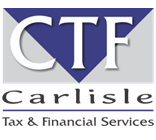Cape Town – Whether investing in property for long-term returns or for resale in the short term, taxpayers are often faced with the question of how their decisions affect their tax liabilities.
The most common tax mistakes in property investment can be avoided by understanding three main aspects, according to Leonard Willemse, senior tax consultant at Mazars.
Intention
From a tax perspective, investment property is generally understood to constitute fixed properties held by taxpayers for a long-term return.
Fixed property held with the intention for resale over the short term usually constitutes trading stock in the taxpayer’s hands.
The essential difference being that the proceeds from trading stock is fully taxable in the taxpayer’s hands, while proceeds from the disposal of investment property is subject to the preferential Capital Gains Tax (CGT) treatment.
The intention with which fixed property is held is, therefore, of critical importance and case law has provided guidelines as to when a taxpayer’s intention has changed.
Taxpayers should be clear with regards to their intention with fixed property so as to avoid any adverse tax consequences.
This is typically true of the situation where a taxpayer is under the impression that the sale of the fixed property should be subject to CGT, while in actual fact the property constituted trading stock in the taxpayer’s hands – based on various factors such as the period held, activities undertaken to develop the property, marketing and subdivision of the property.
Timing of the disposal
In the event where a taxpayer holds investment property and eventually disposes of the investment property the timing surrounding the disposal must be taken into consideration.
Consider the following example: a taxpayer’s year end is 31 December 2017. A sales agreement is signed on 1 December 2017 with no suspensive conditions, however transfer of the investment property only takes place on 4 January 2018.
Taxpayers might generally argue that the transaction should be taken into consideration for the 2018 year of assessment as that is the period in which the transfer of the property took place.
This does not seem to be the case, as SARS is treating the date of signature of the sales agreement – in this case 1 December 2017 – as the date of accrual and will, therefore, include the transaction in the taxpayer’s tax calculation for the 2017 year of assessment.
This could have a direct impact on provisional tax estimates and payments.
In a recently heard Tax Court Case, it was held that section 24(1) of the Income Tax Act applies to property sales where the date of signature of the sales agreement is the date of accrual for tax purposes.
An opposing view is, however, held that section 24 only applies to “credit agreements” as contained in the section’s heading and that the transfer of the property is an implied suspensive condition to the transaction.
However, as the situation currently stands, SARS does not share this view nor does the Tax Court. This matter might well proceed to higher courts, according to Willemse.
Repairs and maintenance as opposed to improvements
Investment property owners often get confused between what constitutes repairs and maintenance of their property and what constitutes an improvement thereto.
Understanding the difference is essential in treating the relevant cost incurred correctly for tax purposes. Repairs and maintenance is fully deductible from a taxpayer’s taxable income, whilst the cost of improvements is not.
Depending on whether the improvements qualify, it could, however, attract a building allowance calculated as a percentage of the cost of the improvement per annum.
Improvement cost is deemed to be of a capital nature and can be added to a property’s base cost for CGT-purposes. Repairs and maintenance are not capitalised against the base cost of fixed property as a taxpayer claims a full deduction thereof for normal tax purposes.
Investment property owners should carefully consider the nature of the expenditure incurred.
Distinguish between the two types of expenditure:
Repairs: An asset or part of its original structure has deteriorated or was damaged and was restored to its original condition (restoration).
Improvements: Any construction on the asset in addition to its original structure where the asset was improved from its original condition – for example, increased income-earning capacity was achieved in the process.
Investment property owners should take cognisance of the above matters and ensure that their understanding and treatment thereof is correct and does not result in any unnecessary adverse tax consequences, cautioned Willemse.
Article: Fin24





